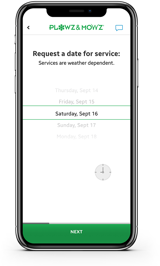How Much to Charge for Lawn Edging
Edging can be the difference between a beautiful, well-manicured lawn and a backyard play area. Combined with mulch and landscaping, edging results in perfectly “coiffed” yards. Of course, since proper edging is hard work, people will happily pay to have a professional do it. The pressure is on to have the best yard in the neighborhood.
When you’re determining your fees, you want to be competitively priced. The pro who edges properly at a fair rate is going to get the business. Simply taking average fees that are the results of an internet search is a risky proposition (yes, we see the irony here, but hang on). Where are those estimates coming from? Usually, you don’t know.
The right way to determine what to charge for your edging work depends upon several things:
- 1. Average fees in your area (you do need to know where you stand)
- 2. Your overhead costs (you must include everything from pens to your pickup truck)
- 3. The cost of your time/labor (which includes workmen’s comp, liability insurance, Social Security taxes, and so on).
- 4. Your minimum expected rate of pay (you don’t want to be under-paying yourself)
Average fees from internet searches do give you a range to shoot for. But it’s a bit of a crapshoot. If you don’t know your costs for your local area, you could be losing money on every job.
Calculate your overhead costs as costs per hour. You need that figure to make the bid, as we’ve discussed in detail in previous blogs. You can also take your previous year’s tax return, if you’ve been in business, and calculate your expenses, less labor and materials. You’re going to include things that affect every job: equipment, truck(s), insurance, rent, accountant, office staff, telephone, and so on. Divide that by 52 weeks to get your weekly cost. Then take the weekly cost and divide it by 40 to get your hourly cost (yes, we know you work more than 40 hours a week, but not always, and you need to start somewhere).
On labor, I did do a search for how much landscaping workers are paid. Even with a grain of salt for swallowing the probable lack of accuracy, I found the rates difficult to believe. They were at about $18- $19 per hour. That’s fine, but I happen to know it’s difficult to find someone reliable to just drive a lawnmower around for eight hours at $25 an hour, let alone ask them to go out and use their muscles and endurance. So, I checked the Indeed job-market website and, indeed, most people looking to hire workers in this field were offering $25 to start.
The cost of an employee doesn’t end there. According to the U.S. Small Business Administration, an employee costs you 1.25 to 1.4 times the person’s wage. So, calculate that $25 worker at $31.25 to $35 an hour. How many feet one laborer can—or will—do in an hour is extremely variable. Try to hire go-getters, if you can!
Finally, what do you want to earn per hour? Be realistic. There’s likely additional profit in there, but you don’t want to find yourself working for less than your employees.
Now you have your cost per hour to operate your business.
Next, know the cost of your materials. While it’s wise to offer a bid on a project with a solid for-the-job figure, you still need to know your costs per foot—and you do need to measure the line to be edged when you make a bid. And materials. Consider, for instance, simple plastic edging vs. a pricey (and labor-intensive) small rock wall.
For your time, there is no easy way around it: How long it’s going to take to get a job done depends upon you and your workers. If you’re a professional, you should have a pretty good idea of how long it takes you to edge xx feet using whatever material the homeowner requests. Use that time to figure out your time per linear foot. If you don’t, the only way to figure it out is to go and do it. You can do that infamous internet search, but you have no way of knowing if those figures were determined using strong young college kids needing a summer job or 60-ish laborers who need to keep working till Social Security starts to pay out.
So, measure the lines on the project to be edged. Calculate how many hours it will take you to do the job—don’t forget to factor in driving to and from the site, loading, unloading, and clean up—and you have the hourly figure. You’ve already figured out your business-expensive and labor costs per hour, so you’re now at simple multiplication. If your cost per hour is $100, multiply that by the 15 hours you think the job will take, and your bid should be in the vicinity of $1,500.
The art of the bid comes in when you determine if the project is worth more money and/or if you expect to have to renegotiate the figure for one reason or another. Sadly, many people think you must ask contractors for a lower price to the point that some automatically factor in a 10 to 25% slush.
Posted on June 2, 2022
Looking for more landscaping jobs?
There’s an app for that.
Download our free landscaper app to book and manage landscaping, lawn care, and snow removal jobs anytime, anywhere.





